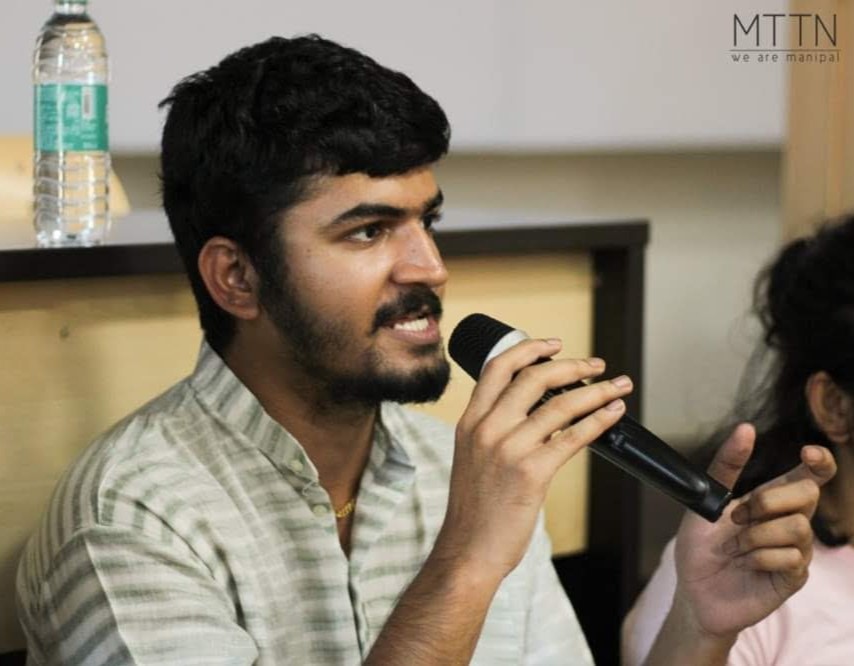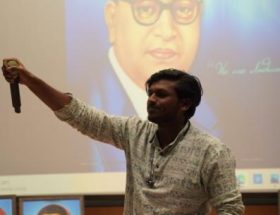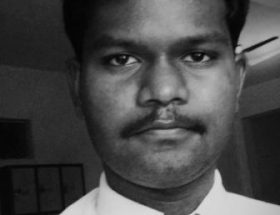Himanshu Patil
 Chotelal Diwakar and his son Sunil went out for a walk around noon. Little did they know that the walk would be their last. The Samajwadi Party leader and his son were shot later that day over a dispute related to the construction of a road which allegedly crossed through the fields owned by the upper castes. Earlier this year a Dalit youth in Nagaur, Rajasthan, was beaten and humiliated for alleged theft of INR 500. A screwdriver was inserted in his anus and the video of this act was circulated on the internet. According to the National Crime Records Bureau of India over 4 Dalit women are raped every day.
Chotelal Diwakar and his son Sunil went out for a walk around noon. Little did they know that the walk would be their last. The Samajwadi Party leader and his son were shot later that day over a dispute related to the construction of a road which allegedly crossed through the fields owned by the upper castes. Earlier this year a Dalit youth in Nagaur, Rajasthan, was beaten and humiliated for alleged theft of INR 500. A screwdriver was inserted in his anus and the video of this act was circulated on the internet. According to the National Crime Records Bureau of India over 4 Dalit women are raped every day.
For centuries now the Dalits have been at the receiving end of atrocities and the situation has only worsened under the Bhartiya Janata Party. Although crimes against Dalits is not a novel phenomenon. It is deeply rooted in Brahminism and the caste system of the Indian society.
Even when in powerful positions, Dalits are not safe. Chotelal Diwakar was a candidate in the 2017 Assembly Elections of the state of Uttar Pradesh for a major political party and his wife the village pradhan.
Failure of the Justice System
Legal remedies have failed to provide protection and safety to the oppressed castes in India. Implementation of the law is lax due to the police force itself being dominated by upper castes or the access to the justice system is absent in totality due to the hegemony of the privileged castes in the judiciary. Being ruled by legislators of a fanatic right-wing conservative party doesn’t aid the cause.
Special legislation exists for the protection of minorities in the country called the ‘Prevention of Atrocities Act’. The conviction rate under this is laughable and the situation has only worsened. Conviction rate dropped from 38% in 2010 to 16% in 2016 for crimes against Scheduled Castes and, from 26% to 8% for crimes against Scheduled Tribes. A look at the data published by the Ministry of Home Affairs in India throughout 2014-2017/18 suggests that while the conviction rate under the Prevention of Atrocities Act was around 16%, the conviction rate for crimes under the Indian Penal Code was at 29.4%. In the Prime Minister’s home state of Gujarat, atrocities against Dalits and Tribals increased by 70% from 2003 to 2018 while the conviction rate was below 5% in Mr Modi’s first 3 years as the Prime Minister of India.
The Idea of Weapons
Weapons in Indian society are more than tools meant for protection. They are also a status symbol and a mark of privilege and strength. The caste disparity in gun ownership can’t coalesce with any data due to the lack of statistical breakdown on gun ownership based on it. Although, when one looks at the people who own guns in India it is the rich and privileged. Thus, it is safe to assume that Dalit households have less gun ownership, due to their lack of financial and social capital.
Weapons instil a sense of confidence in the wielder. That regardless of what happens they will be able to at least put up a fight, that people will be deterred from inflicting pain on them because at that moment they cannot use their social capital to commit atrocities against the person.
An existing provision in the Indian law lets people avail licenses to carry firearms for self-defense. Although, there needs to be an explicit provision allowing Scheduled Castes and Tribes to avail license. For two reasons: one, the existing disparity in the social capital that leads to acquiring of the license. Two, this process is subjective, i.e. the ability to acquire the license is more in the hands of the privileged than those whose life is in actual threat. It is not a coincidence that the oppressed gained confidence in their identity and self after the British handed them weapons and recruited them in the army. The castes who were recruited and armed have now formed a relatively privileged community. This shows that ownership of weapons in itself is an important part of upliftment of the most vulnerable sections of the society.
B. R. Ambedkar once said, “three types of strength are known to man, (1) manpower; (2) finance; and (3) mental strength. Which of these do you think you possess?”. Whilst true that Dalits have a little bit of manpower, they still lack financial strength. Data presented in Lok Sabha of the country states that 45.3% of Scheduled Tribe population are below the poverty line. The number is 31.5% for Scheduled Castes and is unavailable for Other Backward Castes. The relegation of the oppressed sections to the margins of the society and continuous infliction of abuse and pain upon them has tested their mental strength and weapons can play a big part in revitalizing it.
#DalitsNeedGuns
Earlier this year I noticed a rather intriguing hashtag on Twitter ‘#DalitsNeedGuns’. A click on this hashtag and one would see the various posts by a section of the community demanding guns for protection. This demand and emotion are not novel. The historic Bhopal Declaration which happened in the presence of Chandrabhan Prasad in January 2002 focused on jobs, economic activities, etc. Point number 16 of the declaration said, “The State must assume sole responsibility in protecting the SCs and STs. The State must identify atrocity-prone areas and deploy forces. Also, provide arms licences to the SCs and STs as stipulated in the Atrocities Act for self-defense purposes, make the setting up of Dalit self-defense groups from village onwards mandatory, and specially train Dalit women to handle weapons in self-defense against the perpetrators of crimes and atrocities.” The Bhopal Declaration acknowledged the power that weapons hold in emancipating the poor and oppressed. It was a state-sanctioned exercise in arming the subaltern to protect themselves because they realised what the peaceful liberals who advocate for gun control and legal remedies do not, the law does not translate to justice for the impoverished and abused due to the existing power relations in society.
The call for fewer weapons though well-intentioned forgets an integral part of history, gun control has racist origins. Post the American Civil-War, whites of the South wanted to ensure that blacks would be defenceless. Before the turn of the century gun control was a Southern phenomenon, created to protect the racist and discriminatory tendencies of the South.
Gun control puts vulnerable groups in harm’s way. The oppressed get disenfranchised from acquiring a medium to self-defense while the privileged can circumvent the obstacles and acquire weapons, further boosting their status and power in the society. Exclusive legislation granting the oppressed access to guns while making it difficult for the privileged to acquire the same could bring parity in the dynamics of interaction between the groups. One needs to understand gun control is not a liberal or progressive stance but an authoritarian one.
Giving Dalits easier access to guns to protect themselves could revive the Dalit Panther-esque political model responsible for a lot of reforms in India. It could also boost the attempts of the oppressed castes to collectivize as they feel safer and gain confidence in their identity. Legal remedies have not been sufficient to protect the most vulnerable sections of the society, and handing them guns for self-defense does not insinuate gang war. If the privileged feel threatened it is only because they fear a society where the vulnerable will not be easy targets anymore.
Dalit activist and Africanist, and Harvard associate Suraj Yengde has been the inspiration behind the propagation of this hashtag, and, making multiple caste minorities aware of the atrocities they are subjected to, and the need for self-defense. The fact that this idea has even come under discussion at this point shows the dire situation that oppressed castes are located in within the country.
Everyone deserves to feel safe and secure regardless of their caste-class location on the social ladder. The fact that we have reached a point where arming a community seems a viable option, only denotes the breakdown of the protective machinery in the nation.
Brahmin Pride vs Dalit Survival
With the recent extra-judicial killing of gangster Vikas Dubey, the Brahmin-Thakur power struggle in Uttar Pradesh has achieved a new angle and ferocity. The Brahmins have called for arming the community in order to restore its lost pride and even sworn to topple the Yogi Adtiyanath government. Chief Minister, Mr. Ajay Bisht is considered to be representative of the Thakur community which incites further aggression in the Brahmins. The issue at hand is that the caste oppressors i.e. the Brahmins will gain access to legal weapons easily in comparison to the caste minorities and given the solidarity and monopoly of Brahmins in the state-run institutions, this movement can quickly spread across the country. Even in the absence of access to legal weapons, the flow of illegal weapons in the state shall ensure that the ones who want to own weapons and are privileged enough to, be it socially or economically, will get their hands on it. This puts the most vulnerable castes at the risk of getting caught in the crossfire of this bilateral indulgence in violence by two factions. The reason for this is largely the electoral implications that the oppressed castes have due to their sheer numbers. As both sides want to win and we are still in dark of whether the BJP deems it necessary to make a change in leadership amidst the growing discontentment amongst the brahmin community, an increase in the number of violent skirmishes between the Brahmin-Thakur communities is a realistic possibility along with the targeting of the caste minorities due to their influence on political power. In such scenarios in order to protect the minorities and possibly even swing them in their favour in the upcoming 2022 elections, this measure is needed.
The Brahmin faction has already called for arms in order to restore their caste pride. As reactionary as it may sound, for Dalits, easier access to firearms is the need of the hour. Restoration of a Brahmin’s caste pride is stripping off a Bahujan of his life and dignity, for the indulgence in oppression since the inception of the caste system is where the Brahmin’s pride takes roots. So, while the Brahmins will find a way or another to restore caste pride, the Dalits must arm themselves in order to survive.
~~~
Himanshu Patil is a Research Coordinator at the Global Counter Terrorism Council. He holds a Bachelor of Arts degree from Wilson College, Mumbai with specialization in History and is currently enrolled in the ILS Law College, Pune.










